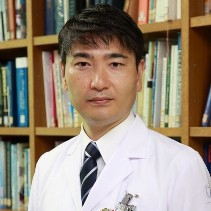Polymer Biomaterials for Bone Regeneration
A special issue of Materials (ISSN 1996-1944). This special issue belongs to the section "Biomaterials".
Deadline for manuscript submissions: closed (30 June 2021) | Viewed by 6874
Special Issue Editor
Interests: oral and maxillofacial surgery; maxillofacial regeneration; biomaterial; maxillofacial reconstruction
Special Issues, Collections and Topics in MDPI journals
Special Issue Information
Dear Colleagues,
Polymer-based biomaterials such as bioresorbable and biodegradable osteosynthetic fixation systems or boney reconstruction implant materials have recently been considered effective bone regenerative reconstruction systems that offer several advantages over conventional metal, titanium osteosynthetic fixation and bone reconstruction systems, including the absence of corrosion and of accumulation of metal in tissues and of the need to remove the implants after osseous healing in addition to radiolucency, decreased pain, and reduced stress-shielding as the implants initially bear a smaller load and gradually transfer this load as they degrade. The first study on the use of polymer-based biodegradable implants was published in 1966. Polymer-based biomaterials for boney osteosynthetic applications are currently becoming more common. These materials are safe, effective, and sufficiently flexible for use at many boney surgical sites. Furthermore, novel polymer-based biomaterial products and feasible modified systems have been widely introduced for clinical applications.
For this Special Issues, I would like to feature any original research from clinical studies as well as in vitro and in vivo studies, reviews, short reports, or opinion pieces from researchers interested in these research topics of “Polymer Biomaterials for Bone Regeneration”.
Prof. Dr. Takahiro Kanno
Guest Editor
Manuscript Submission Information
Manuscripts should be submitted online at www.mdpi.com by registering and logging in to this website. Once you are registered, click here to go to the submission form. Manuscripts can be submitted until the deadline. All submissions that pass pre-check are peer-reviewed. Accepted papers will be published continuously in the journal (as soon as accepted) and will be listed together on the special issue website. Research articles, review articles as well as short communications are invited. For planned papers, a title and short abstract (about 100 words) can be sent to the Editorial Office for announcement on this website.
Submitted manuscripts should not have been published previously, nor be under consideration for publication elsewhere (except conference proceedings papers). All manuscripts are thoroughly refereed through a single-blind peer-review process. A guide for authors and other relevant information for submission of manuscripts is available on the Instructions for Authors page. Materials is an international peer-reviewed open access semimonthly journal published by MDPI.
Please visit the Instructions for Authors page before submitting a manuscript. The Article Processing Charge (APC) for publication in this open access journal is 2600 CHF (Swiss Francs). Submitted papers should be well formatted and use good English. Authors may use MDPI's English editing service prior to publication or during author revisions.
Keywords
- oral and maxillofacial surgery
- bone regeneration
- reconstruction
- dentistry
- biomaterial






